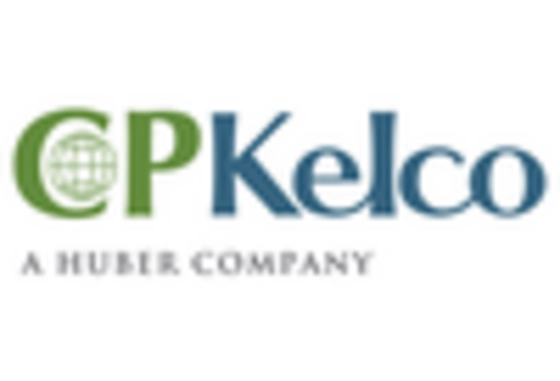Growth in the Food and Beverage Sector
The Food Hydrocolloid Market is poised for growth, largely due to the expansion of the food and beverage sector. As the global population continues to rise, the demand for processed and convenience foods is increasing. Hydrocolloids are essential in this context, as they improve texture, mouthfeel, and shelf life of various food products. Recent statistics indicate that the food and beverage industry is expected to witness substantial growth, which in turn drives the demand for hydrocolloids. This growth is particularly evident in segments such as dairy, bakery, and sauces, where hydrocolloids are integral to product formulation. Consequently, the Food Hydrocolloid Market is likely to benefit from this upward trend, as manufacturers seek to enhance product quality and consumer satisfaction.
Increasing Demand for Clean Label Products
The Food Hydrocolloid Market is experiencing a notable shift towards clean label products, driven by consumer preferences for transparency and natural ingredients. As consumers become more health-conscious, they increasingly seek products that are free from artificial additives and preservatives. This trend is reflected in the rising sales of food products that utilize natural hydrocolloids, which serve as thickening, gelling, and stabilizing agents. According to recent data, the clean label food market is projected to grow significantly, with hydrocolloids playing a crucial role in meeting these consumer demands. Manufacturers are responding by reformulating existing products and developing new ones that align with clean label principles, thereby enhancing their market presence in the Food Hydrocolloid Market.
Expansion of the Vegan and Vegetarian Market
The Food Hydrocolloid Market is experiencing a boost from the expansion of the vegan and vegetarian market. As more consumers adopt plant-based diets, the demand for plant-derived hydrocolloids is on the rise. These hydrocolloids serve as essential ingredients in meat alternatives, dairy substitutes, and other vegan products, providing texture and stability. Market analysis indicates that the plant-based food sector is growing rapidly, with hydrocolloids playing a critical role in product formulation. This trend suggests a promising outlook for the Food Hydrocolloid Market, as manufacturers seek to innovate and cater to the evolving preferences of health-conscious and environmentally aware consumers.
Rising Health Awareness and Functional Foods
The Food Hydrocolloid Market is significantly influenced by the increasing health awareness among consumers, leading to a surge in demand for functional foods. As individuals become more informed about nutrition and health benefits, they are gravitating towards products that offer added value, such as improved digestive health and weight management. Hydrocolloids, known for their ability to enhance the nutritional profile of food products, are being incorporated into various formulations to meet these consumer needs. Market data suggests that the functional food sector is expanding rapidly, with hydrocolloids playing a pivotal role in product development. This trend indicates a promising future for the Food Hydrocolloid Market, as manufacturers innovate to create health-oriented products that appeal to the modern consumer.
Technological Innovations in Food Processing
The Food Hydrocolloid Market is benefiting from technological innovations in food processing techniques. Advances in extraction and processing methods have enhanced the efficiency and quality of hydrocolloid production. These innovations allow for the development of new hydrocolloid types and improved functionalities, catering to diverse food applications. For instance, the use of enzymatic processes and advanced drying techniques has led to higher yields and better product characteristics. As food manufacturers adopt these technologies, they are likely to enhance their product offerings, thereby driving growth in the Food Hydrocolloid Market. The integration of technology not only improves production efficiency but also aligns with the increasing demand for high-quality, sustainable food products.


















Leave a Comment